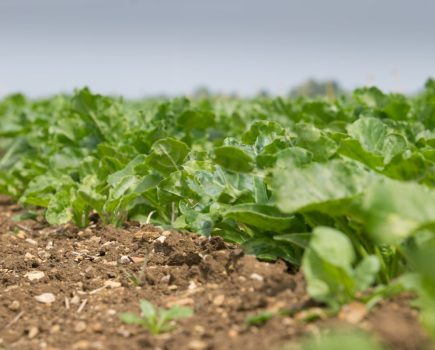How tackling gaps in wireworm knowledge has formed the basis of a commercially-funded research project
The goal of the Enigma I project is to understand improved ways of managing the threat of wireworm. One part of this has been simply identifying wireworm species – although there are around 70 species in the UK, only five or six are crop pests.
The most well-known are from the Agriotes genus – A. lineatus, A. obscurus and A. sputator. Species from the genus Athous and Hemicrepidus can also be a problem, but Adrastus, for example, doesn’t appear to cause damage despite being relatively easy to find in some East Anglian soils, explains independent agronomist and wireworm researcher, Martyn Cox,
“We had 120 Adrastus in 12 bait traps this spring in a field where we planted Maris Piper and there was no damage when we lifted the crop in October.”
Unfortunately, not only is it virtually impossible to visually detect the difference between Agriotes species, it’s also difficult to visually differentiate between some of the UK Agriotes and Adrastus.
That’s why one of the first tasks of the Enigma I project was to develop a method using DNA barcoding to identify the larvae, explains Dr Larissa Collins, an entomologist from project lead, Fera.
After trapping and sweep netting adult click beetles, Fera sequenced their DNA to create barcodes for 16 UK and French wireworm species.
In future, Fera hopes to extend that principle to use metabarcoding to identify wireworm species from soil samples. The difference is, barcoding is similar to scanning one item at a time in a supermarket, while metabarcoding is scanning the whole trolley, explains Larissa.
The project is also answering questions regarding the range of each species with the help of project partners, including Martyn’s company Blackthorn Arable, Pearce Seeds, G’s Growers and Syngenta, using pheromone traps to capture adult click beetles. The information gathered has been plotted on a map.
DOMINANT SPECIES
“There are different distributions across the UK – we have two Agriotes species in Scotland and three across the rest of the country. Once you’re north of the Humber, you lose Agriotes sputator, which is the dominant species in East Anglia,” says Martyn.
Larissa’s team has also been modelling the results from laboratory work to understand how climate change might alter those distributions. “It varies a lot by species. There’s one species we expect to expand its range by about 30% and another one by only 10%,” she says.
“Species also responded differently to temperature in the lab work, with some speeding up life cycles more than others, so we’d expect those species to become more of an issue.”
That information will be crucial for control strategies, she highlights. “If you’re using integrated pest management, using biological controls, and working through rotations, it’s important to understand which life stage the larvae will be at and when.”
For example, small larvae are easier to starve and are more susceptible to soil tillage, while biological controls such as entomopathogenic fungi are more effective on larger wireworms, she adds. “IPM is different to traditional chemical control – you have to understand pest biology more.”
Building greater knowledge around risk factors for wireworm plays into that she says, which is why the project collected field data about each click beetle capture to see if there were correlations between catches of different species and particular risk factors.
FIELD DATA
Aspects such as field history of grass, pasture in adjacent fields, organic matter applications, nearby water sources, soil pH and type, vegetation type near to field, and field aspect were among those analysed, continues Larissa.
“We found some good correlations between where we found adults and those risk factors, but they differed depending on species. For example, the three Agriotes species responded differently to some of those risk factors.”
Ultimately, this work should help growers to make decisions about what to plant based on risk factors identified, she suggests, although the details around this and other findings from the research remain confidential to the project partners (see box).
A follow-up Enigma I project aims to fill more gaps in knowledge, including trying to link adult click beetle catches to future wireworm populations, as it’s easier to catch adults than find wireworms in the soil.
A second aim is to analyse the gut contents of wireworms to identify what they feed on, and also that of their potential predators such as carabid beetles, to see if they’re actually feeding on wireworms, says Larissa. “We also want to see if there’s an interaction between different cover crops and seed mixes, predators and wireworm populations.”
Further research will also look at the impact of biological and non-chemical control agents in UK conditions, she concludes.
This article was taken from the latest issue of CPM. For more articles like this, subscribe here.
Sign up for Crop Production Magazine’s FREE e-newsletter here.




